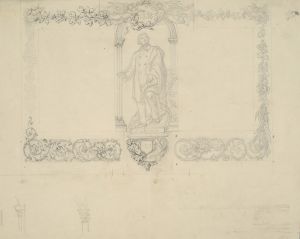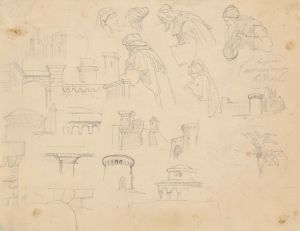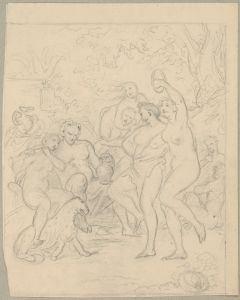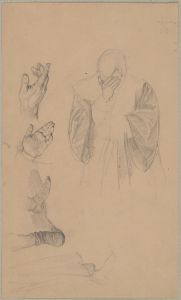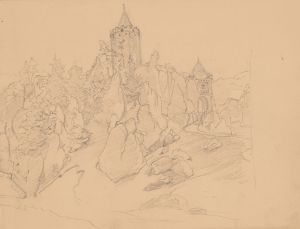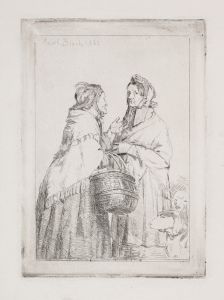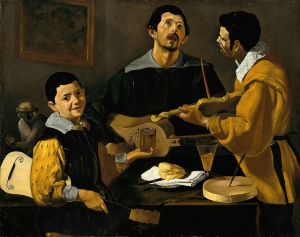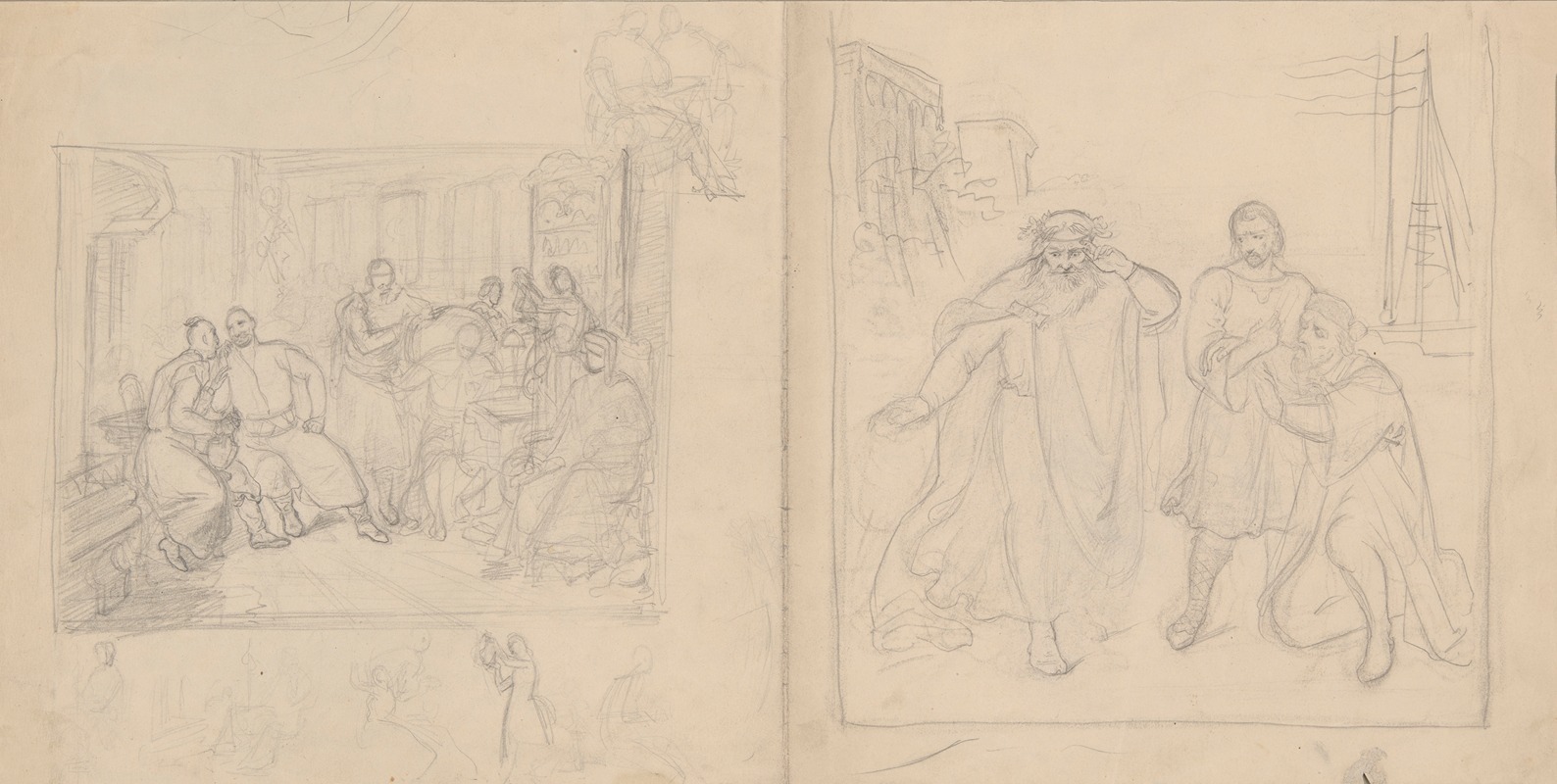
Sketches of figural compositions – the scene inside a manor house and the scene with a diviner
A hand-painted replica of Józef Simmler’s masterpiece Sketches of figural compositions – the scene inside a manor house and the scene with a diviner, meticulously crafted by professional artists to capture the true essence of the original. Each piece is created with museum-quality canvas and rare mineral pigments, carefully painted by experienced artists with delicate brushstrokes and rich, layered colors to perfectly recreate the texture of the original artwork. Unlike machine-printed reproductions, this hand-painted version brings the painting to life, infused with the artist’s emotions and skill in every stroke. Whether for personal collection or home decoration, it instantly elevates the artistic atmosphere of any space.
Józef Simmler was a notable Polish painter of the 19th century, renowned for his historical and genre scenes. Among his works, "Sketches of Figural Compositions – The Scene Inside a Manor House and The Scene with a Diviner" stands out as an intriguing example of his artistic exploration. This piece, like many of Simmler's works, reflects his keen interest in capturing the nuances of human interaction and the cultural settings of his time.
Simmler was born in 1823 in Warsaw, Poland, and he pursued his artistic education across Europe, studying in cities such as Dresden, Munich, and Paris. His exposure to various artistic movements and styles influenced his development as a painter, allowing him to blend realism with a romantic sensibility. Simmler is particularly known for his ability to depict the subtleties of light and shadow, as well as his attention to detail in rendering textures and fabrics.
The painting "Sketches of Figural Compositions" is divided into two distinct scenes, each offering a glimpse into different aspects of 19th-century Polish life. The first scene, "The Scene Inside a Manor House," likely portrays an interior setting typical of the Polish nobility or gentry. Manor houses during this period were centers of social and cultural life, often hosting gatherings, discussions, and various forms of entertainment. Simmler's depiction might include figures engaged in conversation or leisure activities, capturing the elegance and sophistication associated with such environments. The artist's attention to architectural details and period costumes would provide viewers with an authentic representation of the era's domestic life.
The second scene, "The Scene with a Diviner," introduces an element of mysticism and folklore. Diviners, or fortune-tellers, were part of the cultural tapestry in many European societies, including Poland. They were often consulted for guidance or predictions about the future. In this composition, Simmler might illustrate a moment of interaction between the diviner and their clients, emphasizing the expressions and body language of the figures involved. This scene would reflect the societal fascination with the supernatural and the blending of traditional beliefs with everyday life.
Simmler's work is characterized by its narrative quality, where each figure and object contributes to the overall story being told. His paintings often invite viewers to ponder the relationships and emotions depicted, encouraging a deeper engagement with the scene. Through his meticulous technique and thoughtful compositions, Simmler succeeded in preserving a visual record of Polish cultural history, offering insights into the social dynamics and customs of his time.
While specific details about "Sketches of Figural Compositions – The Scene Inside a Manor House and The Scene with a Diviner" are limited, the themes and style are consistent with Simmler's broader oeuvre. His ability to convey the richness of human experience through art continues to be appreciated by audiences and art historians alike, securing his place as a significant figure in the canon of Polish art.





